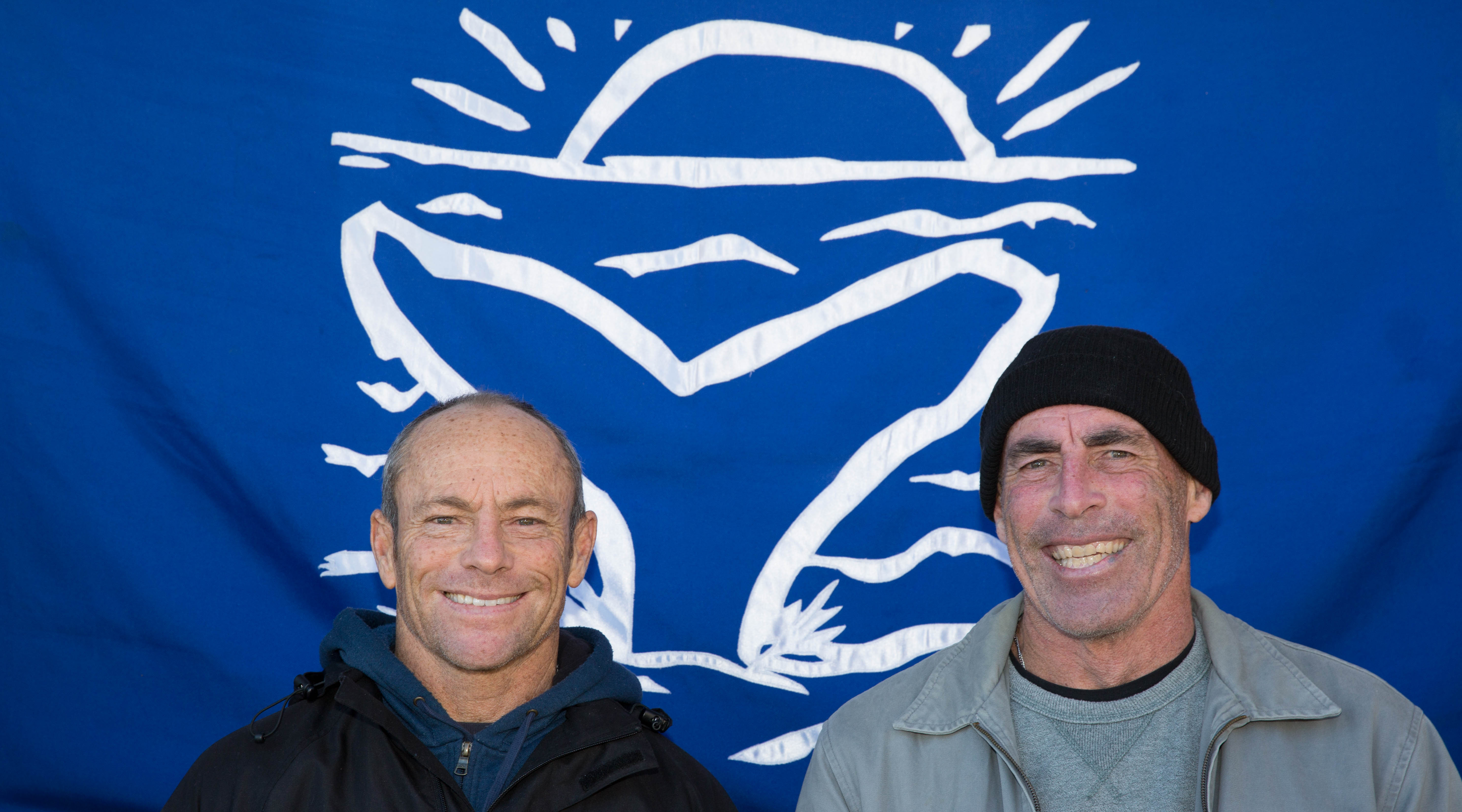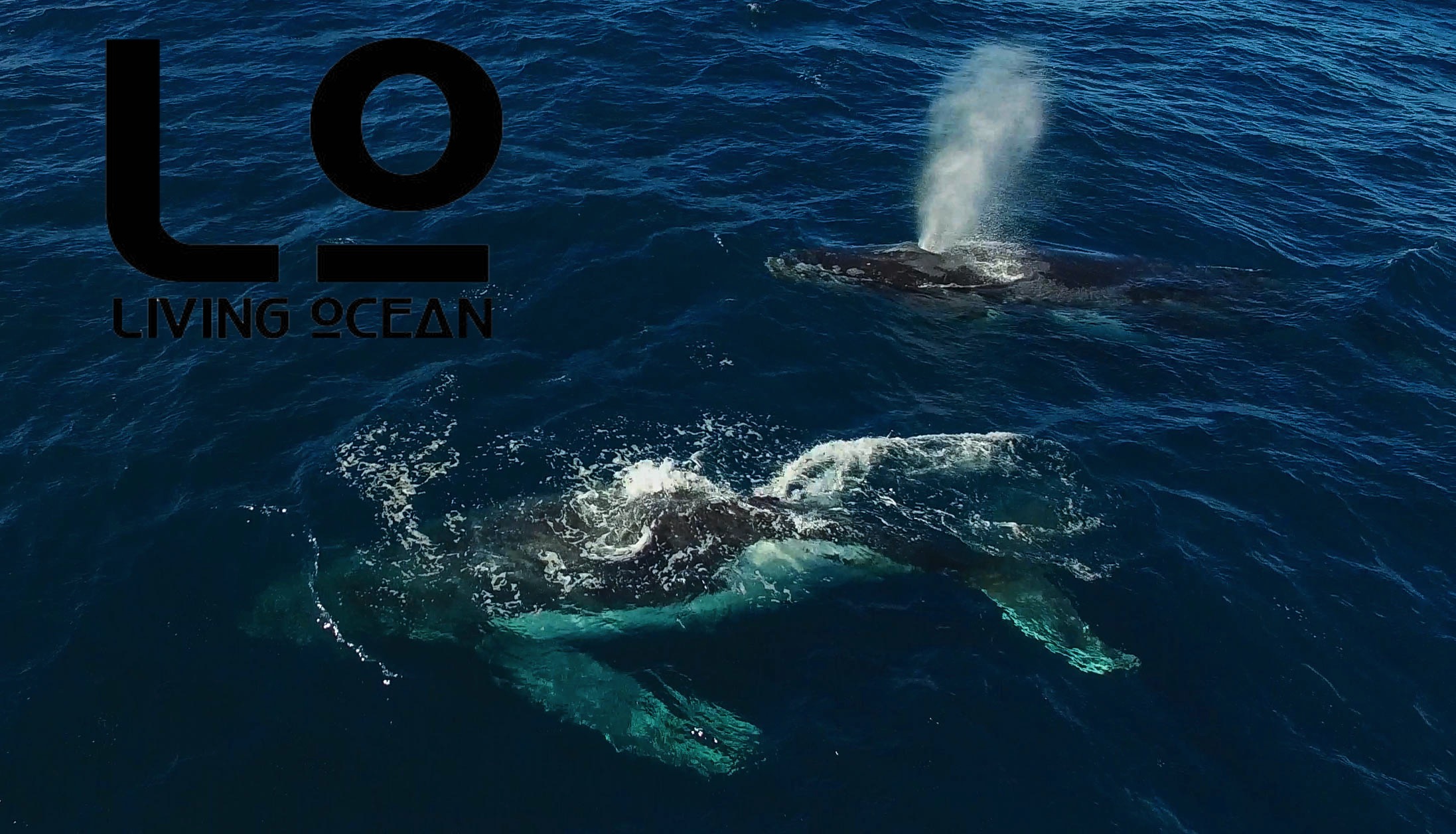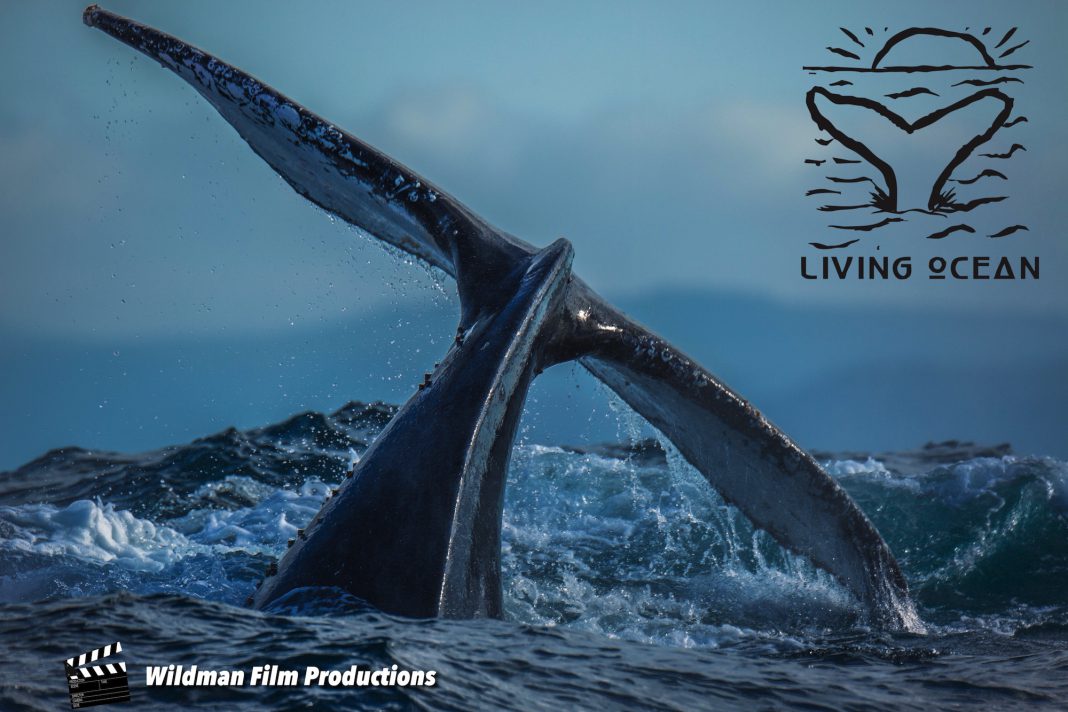
Image: Steve Maxwell
Words: Nick Carroll
“Eleven o’clock!” somebody says. “About 100 metres.”
We’re about 15 kilometres east of Barrenjoey Head, a cool westerly wind is pushing across six foot of southerly groundswell, and two large humpback whales have surfaced just ahead of us to breathe.
Large. One, a female, is around 15 metres. She rises like a huge log rolling in the swell, blows once, twice, then puts her head down, lifts her vast flukes, and submerges. Gone. Albatross and skua bank low above the swirls.

Image: Steve Maxwell
Little bro Tom, his partner Mary, and I are with a volunteer marine research crew from conservation/activist group Living Ocean. The group is studying whale behaviour on the northern migration, during which several thousand humpbacks pass along the eastern Australian coast between May and August on the way to warmwater breeding grounds off Queensland.
On board Salt, a cat-hulled power craft on loan to the group from a generous owner, the team has a licence to research between Newport Reef and Terrigal headland, across the mouth of the mighty Hawkesbury River.
We’ve been invited aboard by the group’s co-founder, cruisy Whale Beach goofyfoot Robbi Newman. Robbi was part of the coastal environment movement that sprang out of the late-1960s surf culture. He hung out with the original Tracks magazine crew, Albe Falzon and John Witzig among others. “I was a country boy, so I always felt close to the environment,” he says. “Being in the water just fed that.”
Like many of his contemporaries, he turned career-wise in the 1980s. Falzon and Witzig had encouraged him into photography, and Robbi did well enough from it to be able to buy a house on the northern beaches. He doesn’t believe his generation ever quite lost their passion for the cause, though “I think we did lose direction for a while,” he says.
Robbi co-founded Living Ocean in 2010 after he and a bunch of like-minded northern beaches locals, including fellow founders Carol Newman, and Kim and Deon Hubner, got together to raise funds for the Sea Shepherd organisation.

Image: Steve Maxwell
Bill Fulton directs the data gathering. Bill is a gentle man with a dry manner, who’s been working this research — first with ORRCA and now with Living Ocean — since 2003. This is his 54th trip: “Different every time,” he says.
There are many reasons for this research, one simply being observation: what are the whales up to? We track several through the day, including the pair mentioned above, which Bill code-names “BB”. For a while the BBs power along at three or four knots, blowing a few times then going down for five minutes or so. But then they seem to stall — vanishing for a long time, and coming up pretty much where they’d dived.
“Sometimes this means the male is singing,” Bill says, and Sam Barripp, another team member, unreels an underwater listening device. But almost before anyone has time to hear the guttural speech of the humpback, the BBs are gone again, 400 metres ahead, tracking toward Terrigal Haven.
Further out, far on the horizon line, a whale breaches, all the way out. Then 20 minutes later, does it again.
This is just the edge of the whales’ great seasonal migration line, and we are well within sight of land. Yet there’s already so much ocean around us that the whales seem like wraiths in a forest — in and out of view, in accordance with some logic we don’t quite grasp.
They’re there, and then they’re not, hidden by the expressionless surface of the sea.
After several hours, Salt breaks off from the pair and runs back into the mouth of Broken Bay. Seals half-bother to watch us from sun-baked rocks. I watch the sea surface temperature gauge fall, from the Eastern Australian current’s 23.5 to Pittwater’s chilly 14.
Data from today will go into Living Ocean’s knowledge bank. Maybe one day it will be used to protect that migration line from seismic disruption related to the sand mining leases lying dormant off Barrenjoey.
In the meantime it’s just a fragment to add to our slowly growing understanding of the great mystery of our coastline. On this day’s evidence, right now, it’s alive and well.
If you’d like to contribute to Living Ocean, or get involved in some way, visit their website: livingocean.org.au

Image: Tom Carroll



